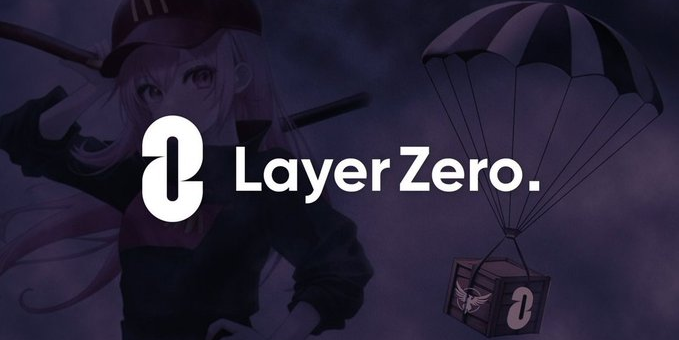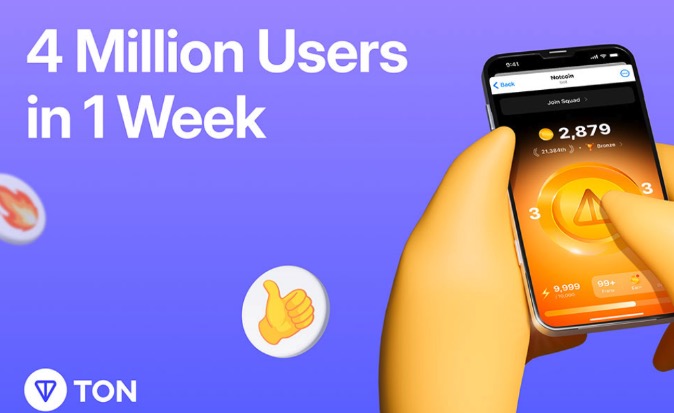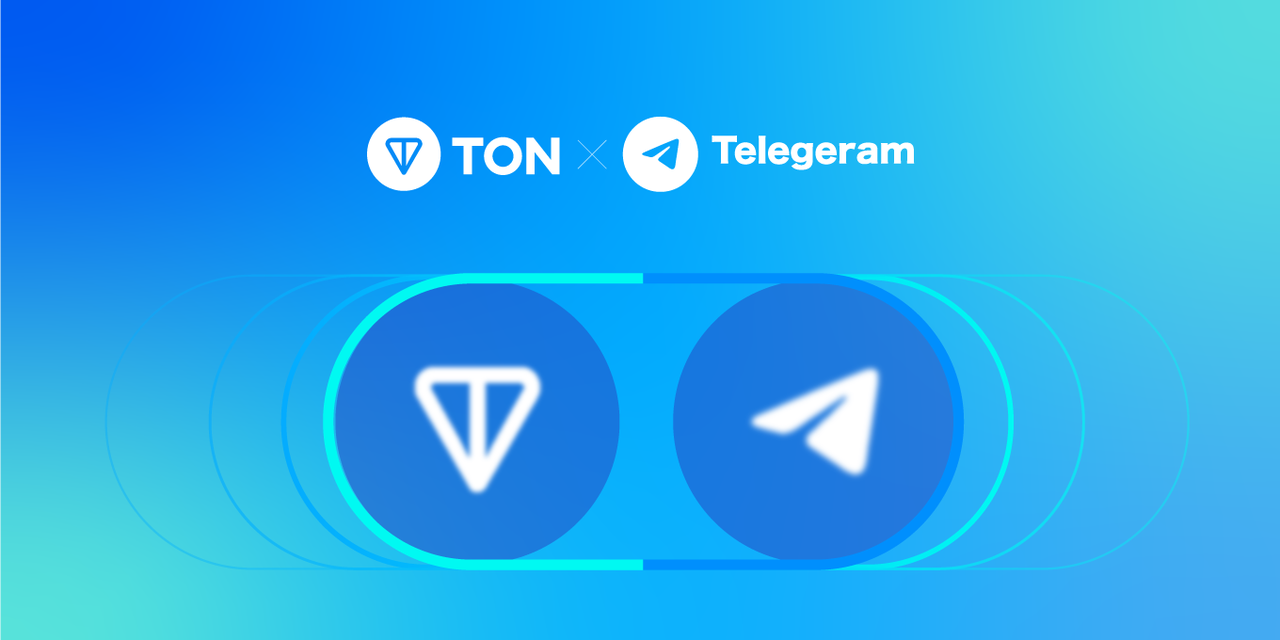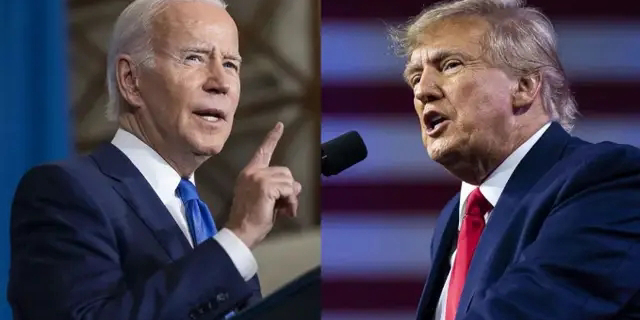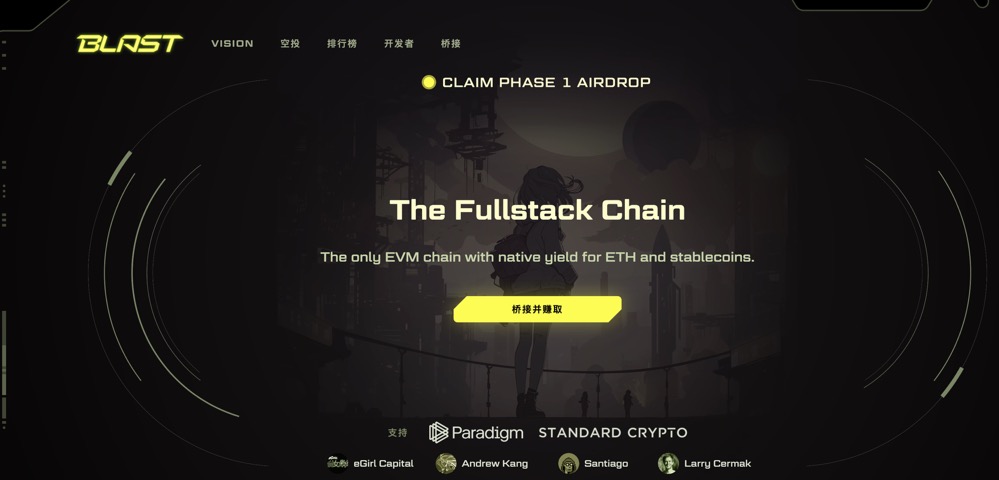
Blast Airdrop is Coming, Who Will Get the 17 Billion Tokens? | TrendX Research Institute
On June 26th, the long-awaited Blast airdrop is finally coming. Prior to this, the Upbit exchange had already announced the listing of Blast tokens, injecting a shot in the arm for the secondary market price of Blast.
Blast Airdrop Goes Live
After the airdrop arrived as scheduled, at 22:00 on June 26th, accompanied by Tieshun's speech, the Blast airdrop arrived as scheduled. It is currently unclear the specific relationship between points and token airdrops, but based on the author's approximately 2.3 million points (ranking 55,000+ on the entire network) to receive 50,000 BLAST tokens, it can be estimated that users with the highest ranking of approximately 23 billion points can receive about 50 million tokens, calculated at the initial issuance price of $0.03, approximately $1.5 million.

At the same time, the strategic plan for Blast market makers has been clarified. Blast has allocated 220 million BLAST tokens to 6 market makers for exchange market making. Currently, market makers are gradually transferring BLAST to CEX in preparation for the 23:00 BLAST trading launch. The allocation is as follows: 80 million → Wintermute; 50 million → Manifold Trading; 30 million → GSR Markets; 20 million → Auros Global; 20 million → Amber Group; 20 million → Flow Traders.
With the continuous distribution of the airdrop, some are happy and some are worried, especially with the proliferation of fraudulent phishing websites. Some users have signed multiple phishing signatures on fake Blast phishing websites, resulting in a loss of $217,947. This has prompted the Blast official to remind users to be cautious of fake Blast accounts and to be vigilant against related scams. At the same time, some users have complained that the airdrop returns are not sincere: NextGenDigitalVenture partner Christian2022.eth expressed that he deposited over $50 million on Blast, but only received a $100,000 airdrop. He even believes that Blast is a scam. TheBlock editor TimCopeland also stated that every airdrop farmer must be forced to watch a Blast video when claiming BLAST tokens associated with the wallet. In addition, he claimed that Blast can claim tokens on the app, but it is not connected to the app (default token claim needs to be done in the Blast app), TimCopeland also stated that he may have clicked on a fraudulent link.
Despite some criticism, Blast's market performance remains strong after the TGE. Within just one hour of the airdrop opening, BLASTFDV broke through $2.6 billion, with a daily increase of over 20%, and FDV reaching a peak of $2.9 billion, in line with the early market prediction of 28±3.
In addition, Coinbase also announced the listing of Blast, another international recognition for Blast outside of Upbit. As of 11 a.m. today, after about 12 hours of the airdrop being open, there are already over 2.5 million users who have completed the claim, with a total of 12.4 billion tokens claimed, accounting for 88.63% of the total 17 billion.

Introduction and Token Economics of Blast
Blast is a Layer2 blockchain where users can earn rewards by bridging assets. It provides incentives such as points, coins, airdrops, and rewards to attract users and developers to participate. There are many mining opportunities in the Blast ecosystem, such as Ambient, Juice, Synfutures, nftperp, and Munchables.
Blast was developed by Pacman and has received support from Paradigm, aiming to create native income for Layer2. When we deposit tokens into Layer2, we are actually depositing the corresponding tokens into the smart contracts corresponding to Layer1 and Layer2. These are idle tokens and are not used to earn income. Blast recommends converting ETH and the stored stablecoins into stETH and DAI, to earn rewards from staking and the treasury.

The token economics of Blast are mainly distributed into four categories:
-
Community: 50,000,000,000 (50%). Blast's success is attributed to the users and builders community who contribute to the ecosystem. 50% of the total BLAST supply is reserved for the community and will be distributed through incentive activities. 100% of this allocation will go directly to the community. The community allocation will be linearly unlocked over 3 years from the TGE date, and any allocation will be based on the schedule determined by the Blast Foundation.
-
Core Contributors: 25,480,226,842 (25.5%). All tokens allocated to core contributors have a 4-year lock-up period, with 25% of the core contributor tokens unlocking 1 year after the TGE date, and then linearly unlocking monthly over the next 3 years.
-
Investors: 16,519,773,158 (16.5%). All tokens allocated to investors have a 4-year lock-up period, with 25% of the investor tokens unlocking 1 year after the TGE date, and then linearly unlocking monthly over the next 3 years.
-
Blast Foundation: 8,000,000,000 (8%). The foundation's allocation will be reserved for critical infrastructure and further development of the Blast ecosystem. The foundation allocation will be linearly unlocked over 4 years from the TGE date.
Blast Airdrop Rules

In the official Q2 report, the details of the first round of airdrops were disclosed. This round of airdrops will distribute 17% (17 billion tokens) of the total BLAST supply to users, with 17% consisting of: Blast points 7%, Blast gold points 7%, Blur Foundation 3%. The specific details are as follows:
-
Blast Points: 7,000,000,000 (7%). Users who connect ETH or USDB to Blast guided the initial liquidity of the Blast ecosystem and received Blast points in the first phase. These users will receive a 7% reward of the total BLAST supply.
-
Blast Gold Points: 7,000,000,000 (7%). Users who contribute to the success of Dapps will receive Blast gold points and a 7% reward of the total BLAST supply.
-
Attribution: The top 0.1% of users (approximately 1000 wallets) will linearly attribute a portion of the airdrop within 6 months. According to the activities of the first phase, attribution requires reaching a monthly points threshold.
-
Blur Foundation: 3,000,000,000 (3%). The Blur Foundation will receive 3% of the total BLAST supply, to be distributed to the Blur community for tracing and future airdrops.
Overall, the current points system of Blast is quite competitive. For example, the author currently has a total of 2.3 million points, leading only 8.5% of users in the Blast total points leaderboard. The user ranked first already has points calculated in the billions. After more than half a year of staking, Blast's TVL has reached $2.56 billion; the total number of users is close to 1.6 million. Assuming an average distribution of 0.03 USD for 17 billion tokens, in the most ideal scenario, each user can receive a maximum airdrop value of around $300, but when factoring in the points weight, the value for users with low points can be even lower.

Price Prediction and Market Analysis
Before the opening, many professionals and institutions made predictions about the Blast price: in the pre-market of WhalesMarket, the lowest current bid price is $0.0297, and the latest price of the historical orders is also close to this value, so the pre-market price can be considered as $0.03.
Based on the total BLAST supply of 100 billion and the initial allocation of 17 billion, the corresponding FDV is $3 billion, and the circulating market value is $510 million.
The reference data for the circulating market value of other Layer2 projects are as follows: ARB is $2.7 billion, OP is $2 billion, STRK is $950 million, ZK is $630 million. According to the data provided by L2BEAT, Blast's TVL is lower than Arbitrum and Optimism, but higher than ZKsync and Starknet, and the price is slightly undervalued. However, considering the decreasing acceptance of Layer2 tokens in the market, the current price and circulating market value can still be considered within a reasonable valuation range.
Market Prospects and Potential Analysis of BLAST
In the long term, the market prospects and potential of BLAST are influenced by various factors.
Firstly, the importance of Layer2 solutions in the blockchain industry is increasing, as they can improve the scalability and performance of main chains such as Ethereum, and reduce transaction costs. As more users and developers enter the Layer2 ecosystem, BLAST, as a member, may benefit from the growth of the entire industry.
Secondly, the token economics design of Blast reflects the emphasis on the community and core contributors. The community allocation accounts for 50% of the total token supply, showing that the project hopes to attract and retain users and developers through incentive mechanisms. This design helps to build an active and continuously growing ecosystem, enhancing the value of BLAST tokens.
However, the market also faces challenges.
Firstly, the competition among Layer2 projects is becoming increasingly fierce, with projects such as Arbitrum, Optimism, and ZKsync continuously optimizing their technology and ecosystems. Blast needs to continue to make efforts in technological innovation, user experience, and ecosystem construction to stand out in the competition.
In addition, the market's acceptance and recognition of Layer2 tokens will directly affect the market performance of BLAST. Although the current price and circulating market value are considered reasonable valuation, market sentiment and investor confidence may cause price fluctuations. Therefore, Blast needs to enhance market confidence through transparent governance and continuous technological innovation.
Future Development and Strategies
To succeed in the competitive Layer2 market, Blast needs to formulate and implement a series of strategies:
-
Technological Innovation: Continue to optimize Layer2 technology to improve transaction speed and security. Explore interoperability with other blockchain projects to enhance the breadth and compatibility of the ecosystem.
-
Ecosystem Construction: Expand the application scenarios of the Blast ecosystem through cooperation with more Dapps. Incentivize developers to build innovative applications on Blast, enhancing the diversity and activity of the ecosystem.
-
Community Engagement: Strengthen interaction with the community and listen to user and developer feedback. Enhance community participation and sense of belonging through incentive mechanisms and transparent governance.
-
Market Promotion: Increase market promotion efforts to enhance the visibility and influence of BLAST tokens. Cooperate with mainstream exchanges and media to expand the market coverage and user base of Blast.
-
Governance Transparency: Ensure the transparency and fairness of project governance to enhance investor and community trust. Regularly release project progress and financial reports to demonstrate the transparency and accountability of the project.
Conclusion
The launch of the Blast airdrop has attracted widespread attention, and its token economics and market prospects are highly anticipated. Despite facing competition and market challenges, Blast is expected to succeed in the Layer2 market through strategies such as technological innovation, ecosystem construction, and community engagement. With the addition of more users and developers, the future development potential of Blast is worth looking forward to. We will continue to monitor the dynamics of Blast and look forward to its creation of more value and opportunities in the blockchain industry.
Follow Us TrendX
TrendX is a leading AI-driven Web3 trend tracking and intelligent trading platform globally, aiming to become the preferred platform for the next billion users entering the Web3 field. By combining multidimensional trend tracking and intelligent trading, TrendX provides a comprehensive experience of project discovery, trend analysis, primary investment, and secondary trading.
Website: https://app.trendx.tech/
Twitter: https://twitter.com/TrendX_tech
Investment carries risks, and the project is for reference only. Please bear the risks yourself.
